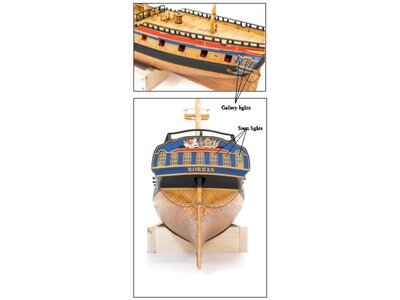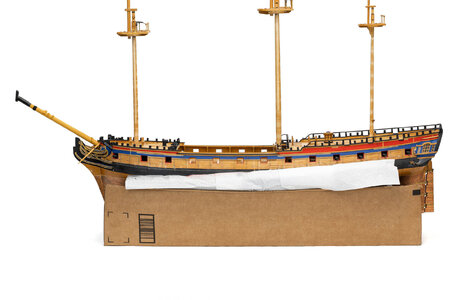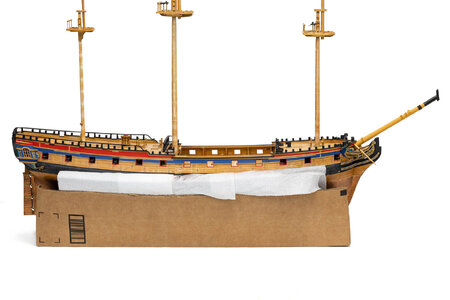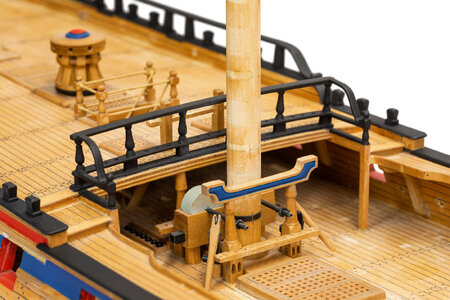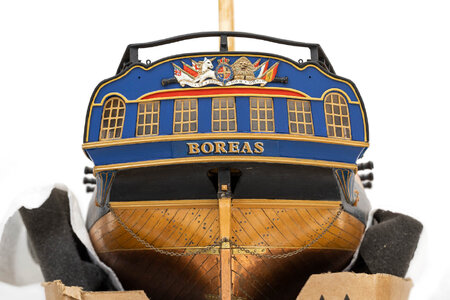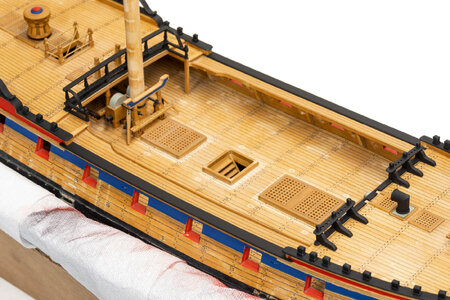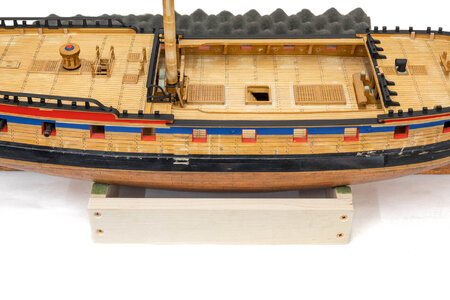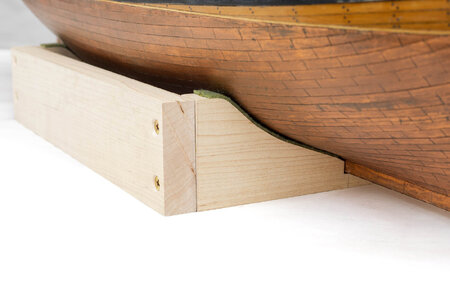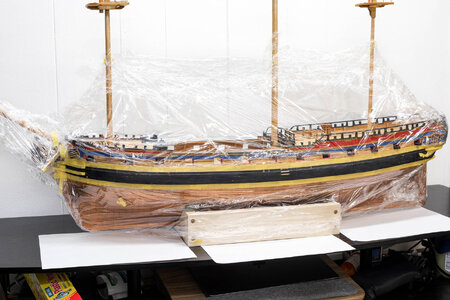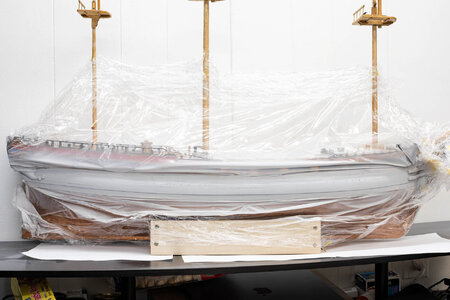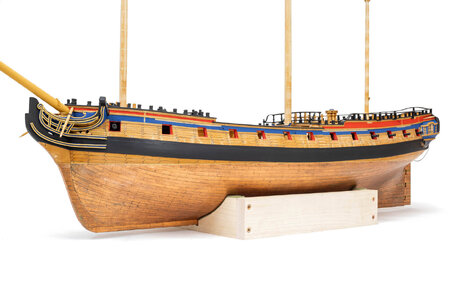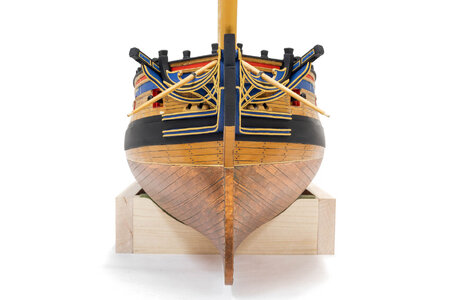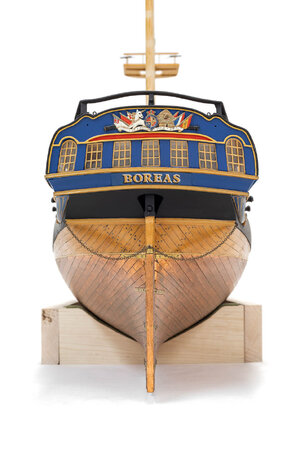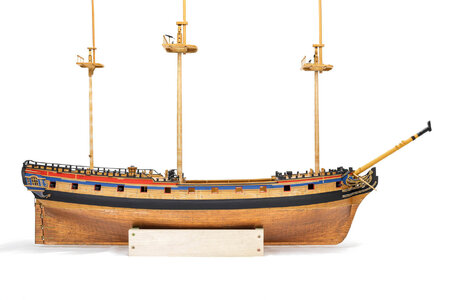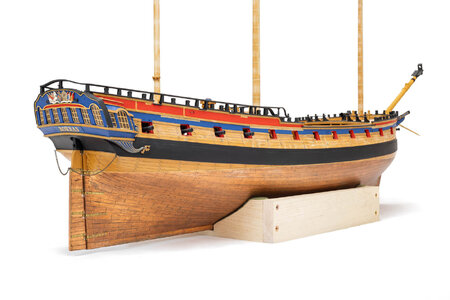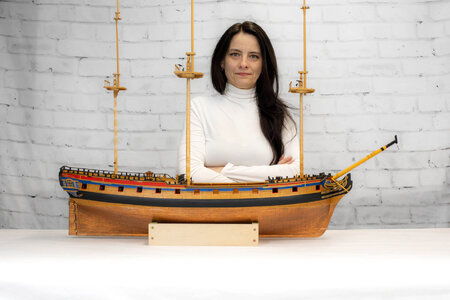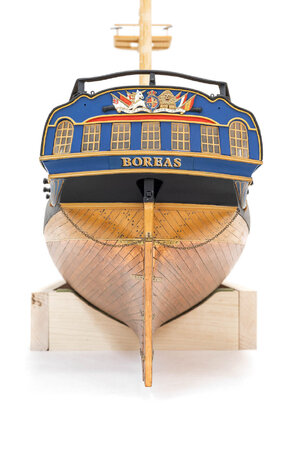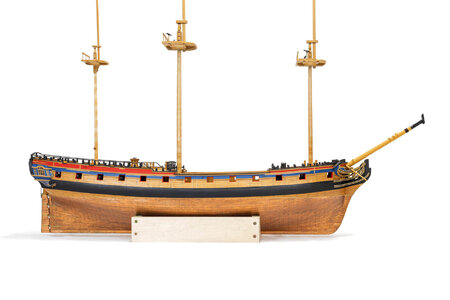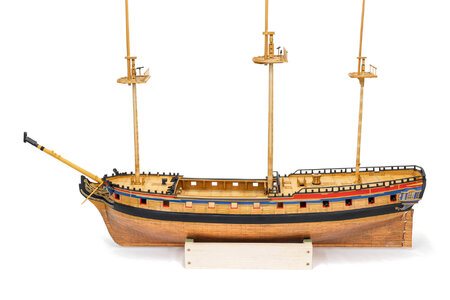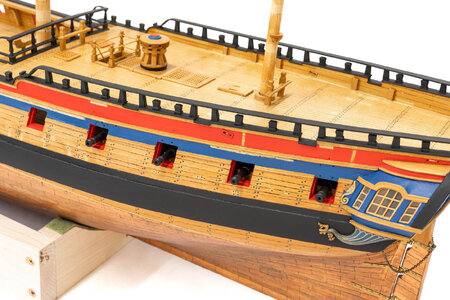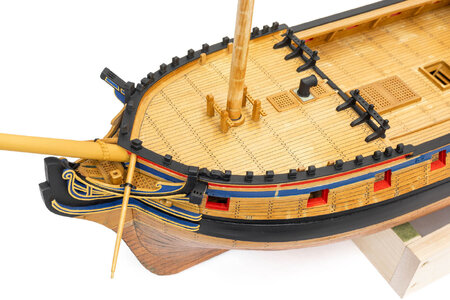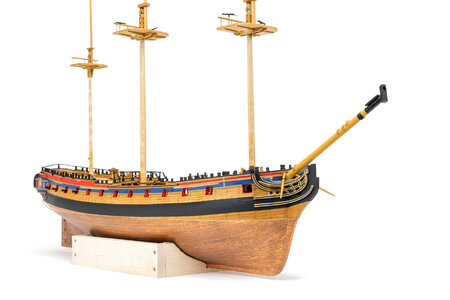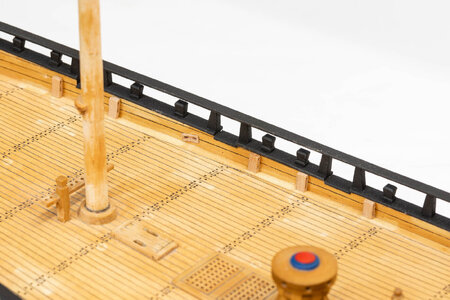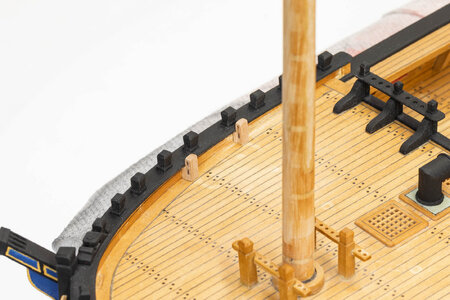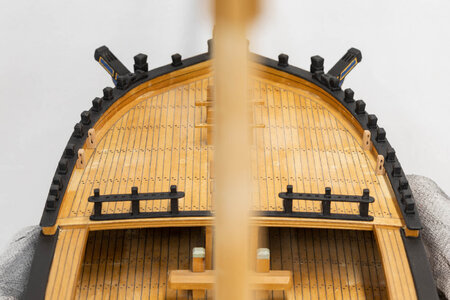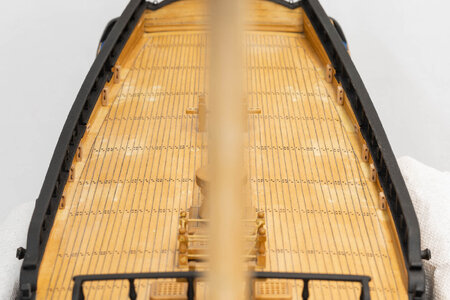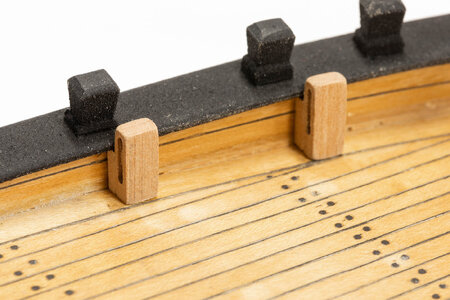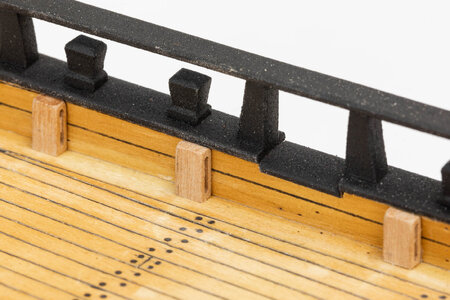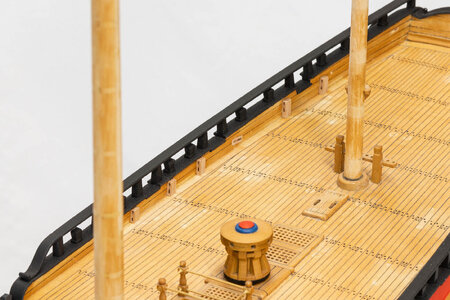You are using an out of date browser. It may not display this or other websites correctly.
You should upgrade or use an alternative browser.
You should upgrade or use an alternative browser.
Restoration & Upgrading of the HMS BOREAS (1774) - scale 1:48
- Thread starter shipphotographer.com
- Start date
- Watchers 17
-
- Tags
- 1:48 boreas restoration upgrading
Splendid work, Ohla! 














Beautiful work as always, Ohla.
What is the purpose of "Cavel" blocks? I can't find anything about them in my plans for Medea (Enterprise class) 1778.
Do they serve the same purpose as cleats?
I cannot speak for this particular ship, but one example is the Medway (60) 1742 as she was rigged in 1763. The cavel blocks were the belaying points for the fore and main topsail yard halliards and main top and middle staysail halliards. Cavel cleats were belaying points for the main topsail yard braces.
Allan
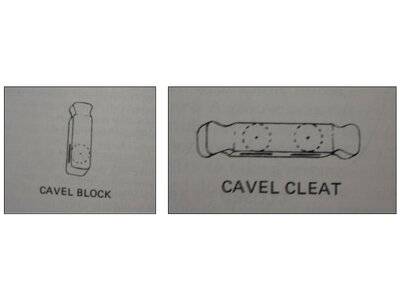
Allan

Last edited:
HMS PANDORA 3 photo gallery
Handcrafted Ship Model Photo Gallery of - HMS PANDORA, 24 guns sixth rate frigate, 1779-1791 envolved in the Bounty legend - Part 3. Ship Model Plans , History and Photo Galleries. Ship Models of Famous Ships. Advices how to Build. Modelers from Hungary.
And yes, these bloks were designed for running rigging with larger rope diameters, such as Halliards and Sheets...
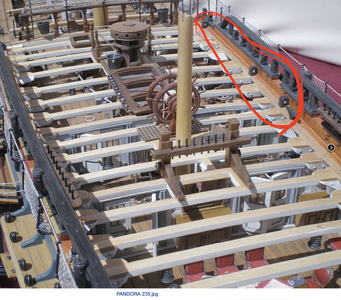
I'm upgrading her to the version commanded by Horatio Nelson (1784-1787)What year is Boreas being depicted?
Thanks
The Pandora model is gorgeous. One oddity is that there are no lodging knees for the deck beams, only hanging knees which is contradictory to the drawings of Pandora in the AOTS series book on her by Kay and Coleman and other ships' contemporary deck plans that show the ledges, carlings, and knees. Scantlings for lodging knees and hanging knees are given in both Steel's The Elements and Practice of Naval Architecture and The Shipbuilder's Repository. According to Peter Goodwin the lodging knees were used to "lodge" the beams longitudinally preventing movement fore and aft, especially in heavy seas. How would this movement be prevented if the beams were kneed as in the model in the above photo? Did McKay get it wrong and Pandora was different than other ships?
Allan
Allan
I find it interesting that there are pairs of hanging knees, one on each side of each beam, instead of a lodging knee on one side and a hanging knee on the other. Why would you need TWO hanging knees?
- Joined
- Mar 1, 2022
- Messages
- 261
- Points
- 168

This model is an overall masterpiece to me, not perfect tough. Anyone observed the different eight of the two facilities' stern windows?
Ciao Albertothis model is an overall masterpiece to me, not perfect tough. Anyone observed the different eight of the two facilities' stern windows?
I looked but cannot find what you are referring to when you say stern windows. I realize it is probably a translation issue, but there are no windows on these old ships. Are you speaking of the gallery lights and/or stern lights on the Boreas model? Not to be confused with lanterns, picture below.
Allan
